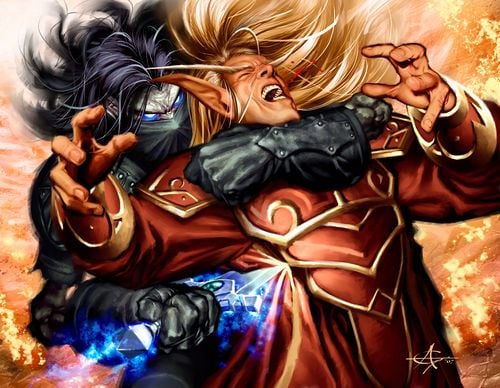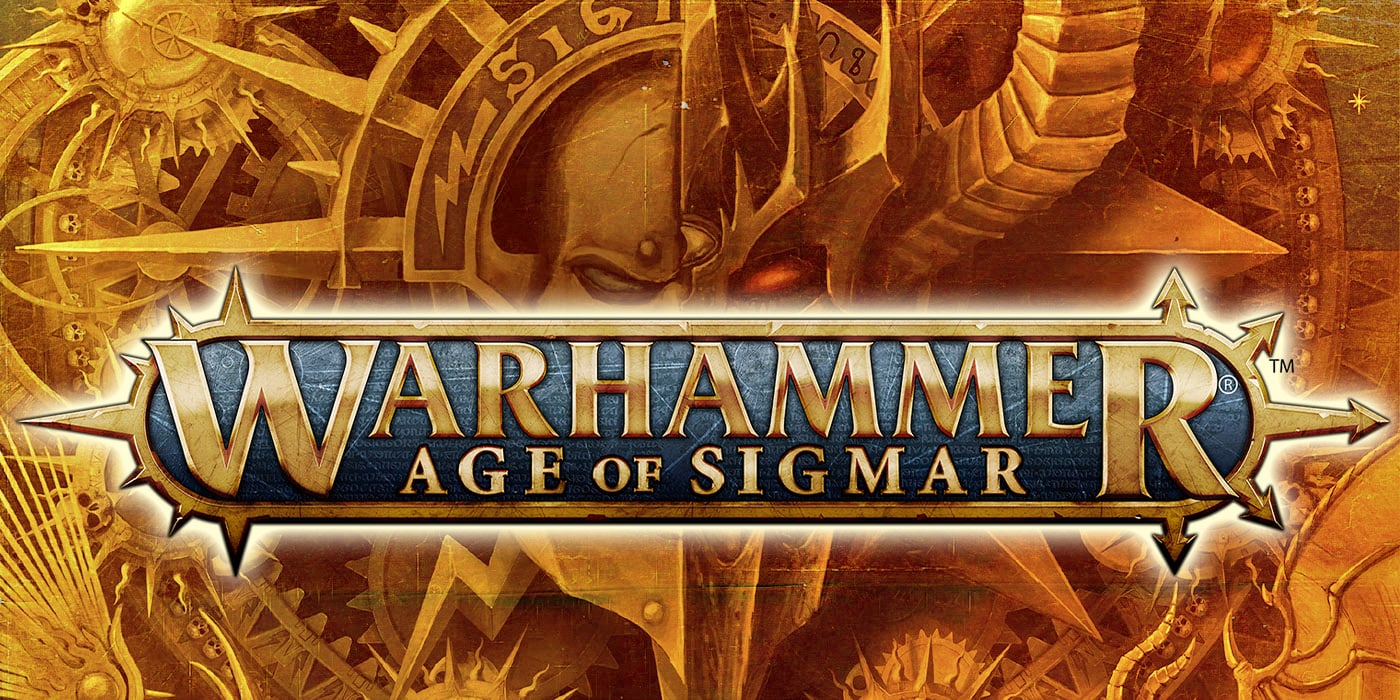Popular Mechanics: How I Would Betray You
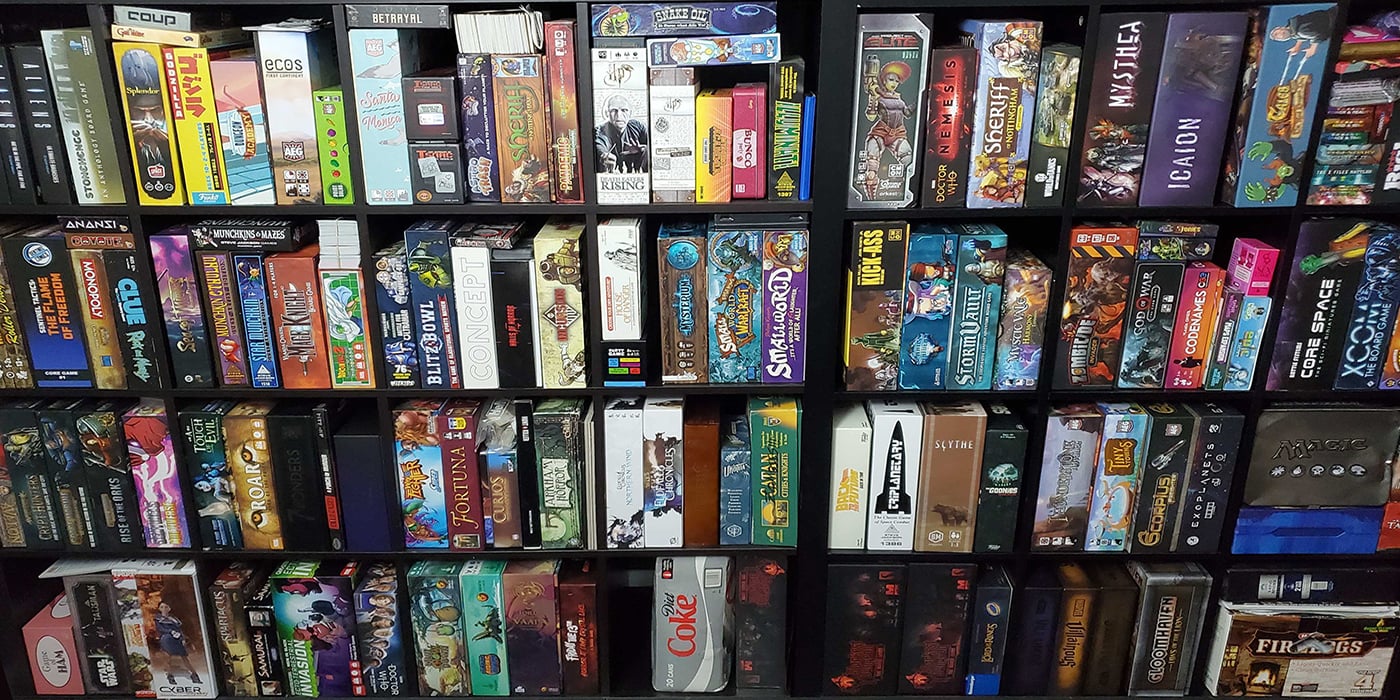

Now that we understand betrayal in boardgames and seen how everyone else does it, let’s design our own proper channel to let that treasonous nature flow.
Welcome to Part 3 of our discussion on betrayal on board games. This will be the final part of this discussion.
Part 1: Breakdown of Betrayal
Part 2: Betraying Your Game
In Breakdown of Betrayal we defined betrayal and how the mechanic functions, as well as broke it down into core components. In Betraying Your Game, we discussed various games which utilize the betrayer mechanic, as well as various pros and cons within each. Today in How I Would Betray You, we’re going to design our own game. At least the mechanics of it. The idea is to have the betrayer be a functionally core mechanic. The game will revolve around the betrayer mechanic rather than being a game simply with a betrayer mechanic. As a blanket statement beforehand, though. There are a lot of tabletop games out there and it is super possible that a game we design here today will already mostly exist. If that is the case, please let me know in the comments! I’d love to check that game out. So let’s get started.
Design Goals
My main complaint with most betrayer games is that it’s too easy for the betrayer to be found out. My ideal game would give the betrayer plenty of time to lay low and see how the game is going before attempting to sway the outcome of the game. A lot of betrayer games give the players multiple ways to lose. It would be in the betrayer’s best interest to see where the natural weak points are and attempt to weaken them further. I want the betrayer’s action to be so subtle that the other players aren’t even sure they are doing anything. However, it’s important for the betrayer to really get that sense of accomplishment. I want this game to give the betrayer the ability to set a plot in motion that, if it comes to fruition destroys any chance of victory for the other players.
The face of a brilliant scheming tactician
A good betrayer game should take a while to build suspense and tension. If the game is too short then if the heroes lose, they don’t really care. However, if the players get involved and drawn into the game then they are emotionally invested and they want to win, which is important, especially for betrayer games. Even more so for this betrayer game. If we’re going to do this, we’re going to do it right. I want losing this game to be emotionally draining. Sorry, everyone.
If the rules of this design are that the game has to revolve around the betrayer mechanic, then the victory conditions for the heroes must be to find the betrayer. Once they do that, they win. If the betrayer can achieve their goals before that happens, the betrayer wins. I prefer to avoid player elimination, but that would also be a possibility for betrayer victory. Also, I want to make sure to steer clear of this just being a Mafia/Werewolf clone.
While brainstorming for this, I thought back to a game I used to play with friends that we called Assassin. It was a ‘game’ played over usually several days or longer. During setup of the game, each player (hopefully around a dozen) would each be given a target. The goal was to find your target when you two were alone and ‘stab’ them with a toothbrush. If you killed someone, you took their assassination target. If any other player saw you, you were out. Last one standing wins. While the game was going on, each player really felt that sense of suspicion towards everyone else. I once patted a friend down because he asked me for help bringing in groceries. That’s the level of mistrust I want in this game.
 It may look like he’s brushing his teeth, but he’s really plotting my demise!
It may look like he’s brushing his teeth, but he’s really plotting my demise!
Game Features
Before we dive into going over the mechanics of the game, I want to mention that I’m not going to fully design the game. I’m going to go over some of the mechanics that I would like. Don’t expect this to be fully playable. There will probably be some holes on how things will work and questions left unanswered. That said, here are some general mechanics I would put into this game.
Traitor Deck
The Traitor Deck is mostly cards that do nothing. However, within are a few traitor cards. The game starts with no one as a betrayer. Everyone is on the same team. Every turn, each player draws a card. If they draw a traitor card, they become a traitor. Each player discards their cards face down and play continues. This is admittedly closer to the defector mechanic described last time, but with some differences. In Betrayal at House On the Hill, the defector is openly known. Here, the defector is will still be hidden information. Additionally, and more importantly, the other players don’t know when the traitor has arrived. Similar to the first half of Battlestar Galactica where players don’t know if there is a betrayer or not.
However, with this system, players will not know when a betrayer has shown up. Because victory is determined on discovery of the betrayer, the game can’t complete until the betrayer card is dealt. So, during the first half of the game when there is no betrayer, players will be setting up the game in such a way as to assist them in tracking down the betrayer when they slip up. Which means a potentially good betrayer could remain hidden for a long time before attempting to secure failure for the cooperative team. There are a lot of details to iron out with this mechanic, but I think it could definitely fit well into our game.
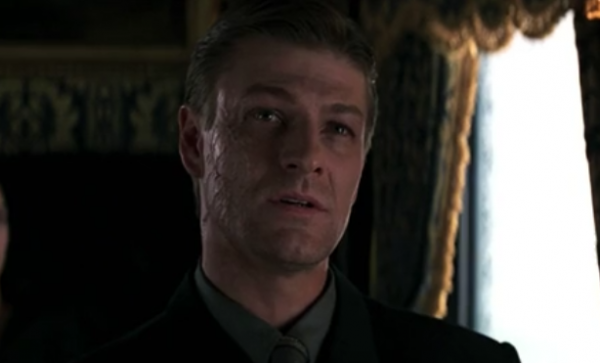 Good thing 006 drew his traitor card before 007 or it would be a very different movie.
Good thing 006 drew his traitor card before 007 or it would be a very different movie.
Scheme Deck
The Scheme cards are the core of how the betrayer forces failure for the cooperative team. Each player will have a scheme reminder board to assist them during play. During each turn, the top scheme card will be revealed from the scheme deck. Each Scheme card requires several conditions to take effect. If the revealed Scheme card’s conditions are met, the cooperative team suffers in some manner and additional scheme cards are revealed. Otherwise, nothing happens.
What I like about this mechanic is it allows the betrayer the option to attempt to set up the board in such a way that once the correct scheme card is revealed, everything falls apart for the heroes. It does mean the betrayer has to chance into the correct scheme card, but thematically I think that fits really well. It promotes patience for the betrayer. Also, there would be many schemes and each with a good number of conditions to be met, which would ensure that some schemes would trigger naturally and those that the betrayer did force could appear naturally. And it would allow master betrayers the ability to set up combo schemes if they got lucky. Because each triggered scheme flips another scheme card, with a little luck and a lot of planning, the betrayer can ruin any chances of victory for the heroes in one turn.
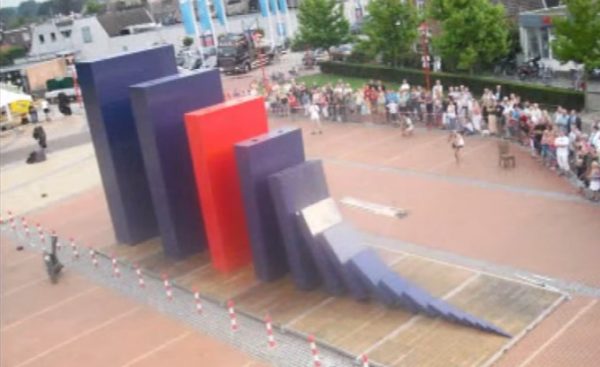 Something, something, butterfly. Something, something, chain reactions.
Something, something, butterfly. Something, something, chain reactions.
Hidden Actions
Rather than having each player openly declare their actions, they would play action cards face down. There would also be a couple more added randomly. These action cards would be mostly very ‘reward with a cost’ types of effects. So a betrayer would be able to play the cards which would focus on depleting the costs beyond what they can handle and setting up various Schemes. However, each action card gets voted on. Once each action card is revealed, players would work together to decide which actions would be best taken. Any actions which get voted down force a roll of a die. Failing the die roll causes the cooperative team more heartache.
For example, an action card which uses some amount of an uncommon resource for some small benefit. The players decide they need to maintain a supply of that resource, so they choose to pass the action instead. When they do that, they roll a die and on a certain result, likely determined by the action card itself, they instead lose that resource with no benefit. If the players had passed the roll, the would have lost nothing. This system allowed betrayers to subtly push the collective resources to their limits with being able to maintain plausible deniability. Even cards that simply forces 1 of the players to take damage. It’s easy enough to explain that away as a random draw, but if the betrayer can play enough of them it could end the game. These cards are also how the betrayer would set up their schemes and try to set the stage for everything to crumble.
 Sometimes schemes get out of hand even when you didn’t mean for them to
Sometimes schemes get out of hand even when you didn’t mean for them to
Cooperative Roles
One of my favorite parts of Battlestar Galactica is how the Admiral gets to control the ‘speed’ of the ship. If they become a cylon they have such a huge potential to very subtly affect the outcome of the game. I would love to see more of this type of mechanic. Allowing each player some vital role in the game’s victory, but one that can easily be sabotaged. Each player would have a role which is required for victory. Normally this would be impossible because games like Battlestar Galactica have victory conditions outside finding the betrayer. But because we are using that as the cooperative victory condition, it works for this. Without delving too much into theme, it’s not hard to think of various roles each player could have. Using the Hidden Actions mechanic, we could have one player be the one to choose which actions to take. Another player could be in charge of drawing multiple schemes and they have to pick which one to play. Basically any role where the player knows options the other players don’t, and they get to choose which one have take effect. Hidden information is vital for betrayer games so this game is going to have a lot of hidden information.
Final Thoughts
Like I said above, there are a lot of details to iron out in these mechanics, but I think they could come together nicely. Let me know what you think in the comments. I know it’s shocking, but I do actually read them. Thanks for reading this brain dump of a game design. I really would have liked to put more time into this, but, you know, deadlines. So maybe some day I’ll revisit this game concept and hammer out the kinks. I really enjoy designing games and coming up with fun, neat mechanics.
If you like what you’ve read, you can check out my very bland looking website (I’m not good at aesthetics) where I have many more game design things I’ve made over the last few years: Nerdaphernalia.
If you’ve enjoyed this discussion and analysis, please do let me know. I plan to continue this series with a new mechanic to discuss and start the whole process over.
~What game mechanic would you like to review next time?

